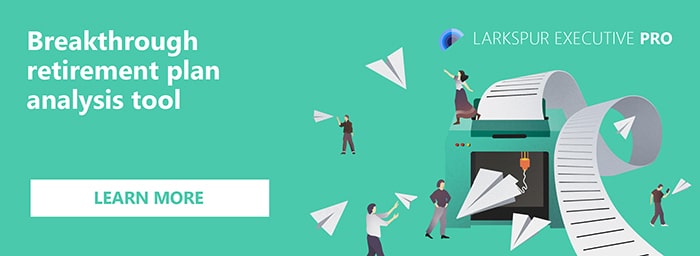- The provisions that were contained in the earlier version of the act but were retained in the new one include
- Additional new provisions include
- Automatic enrolment that encourages participation
- Matching contribution based on student loan payments
- Expanding the use of after-Tax contributions
- Shortcomings and Looking Beyond the SECURE Act 2.0
What is the SECURE Act ?
The bill dubbed the “SECURE act 2.0” is a bill that was introduced last November aims to build on the Retirement Enhancement Act, signed in to law in December 2019. The SECURE Act 2.0 increases the required minimum distribution age to 73 starting in 2022, the age to 74 in 2029 and 75 in 2032. The original SECURE act expanded eligibility for long term, part time workers to contribute to their employers 401(k) plan.
The provisions that were contained in the earlier version of the act but were retained in the new one include:
- expanding automatic enrollment in retirement plans by enrolling employees automatically in their company’s 401(k) plan when a new plan is created;
- modifying the credit for small employer pension plan startup costs;
- clarifying that a 403(b) plan may be established and maintained as a MEP;
- allowing a higher catch-up limit (with changes);
- increasing the required minimum distribution age (with changes);
- creating a retirement plan matching program to encourage employees to pay off student loans (including a solution that ARA identified about the impact this new retirement plan design feature could have on the ADP test);
- providing a safe harbor for corrections of employee elective deferral failures;
- reducing the excise tax on certain accumulations in qualified retirement plans;
- establishing a new retirement savings lost and found; and
- expanding the Employee Plans Compliance Resolution System.
Additional new provisions include:
- Separate application of top-heavy rules to DC plans covering excludible employees, which is included in the Portman-Cardin Retirement Security and Savings Act
- Repayment of qualified birth or adoption distribution is limited to three years
- Self-certification for deemed hardship contributions
- Penalty-free withdrawals from retirement plan in case of domestic abuse
- Retroactive first year elective deferrals for sole proprietors
The most important aspect of the SECURE act is to enable more Americans to have access to retirement. The way it does that is by providing incentives for businesses and easing restrictions that would otherwise hinder small businesses from providing 401(k) plans to their employees.
Let’s take a look at some of the prime features that the SECURE act wants to introduce.
Automatic enrolment that encourages participation.
Automatic enrolment in a retirement plan is designed to make it easier for employees to participate. The bill would require smaller businesses with 401(k) and 403(b) plan to automatically enrolled. Employees who prefer not to participate can still opt out. Typically, the initial enrolment amount is 3 percent and then increased each year but there is an exception for small businesses who have ten or fewer employees, new businesses which are less than a year old, religious institutions and government agencies.
Matching contribution based on student loan payments
The SECURE act allows the employer to making matching contribution towards an employees retirement plan even when they are not saving themselves owing to student loans. According to the bill employees who have to choose between paying off their student loan or save for retirement could have a portion of their retirement plan matched by their employers. It has to be noted however that the decision to include this provision of the act into the plan is completely voluntary and many businesses especially small ones may choose to not include this feature as the recordkeeping could become burdensome.
Expanding the use of after-Tax contributions
Under current law, retirement plans cannot have a designated Roth IRA account but that changes with the SECURE Act 2.0 because participants will now have the option to make Roth contributions within the plan.
The bill would also require participants to make catch-up contributions to a Roth account in 401(a), 403(b), and 457(b) plans. Further, under these plans, employers may allow employees to elect matching contributions in a Roth account versus pre-tax.
Shortcomings and Looking Beyond the SECURE Act 2.0
If the main concern for the government is to make retirement available to more Americans so that they can enjoy a reasonable standard for living them the SECURE act falls short. The retirement crisis that we face in America today cannot be solved by automatic retirements or why most of us don’t have enough savings. One of the biggest reasons for the ongoing crisis is that isn’t a universal coverage by personal retirement savings plans. Workers can go long stretches without having access to a retirement savings plan, as many employers choose not to offer them or unemployment puts them out of reach entirely, according to a recent JPMorgan survey. Moreover, small businesses with existing plans are exempt, so any new worker won’t necessarily be enrolled.
By automatically enrolling every working person in a plan, with the option to opt out, We would immediately solve for the three biggest reasons people don’t save for retirement, according to the U.S. Census Bureau: Not having a plan at work (74% of non-savers), being self-employed (14%) and not being included in a workplace plan (12%).
A national auto-IRA plan would also break, or at least weaken, the psychological link between employer and retirement savings, so perhaps fewer people would cash out their plans once they left a job.
The one thing most of us forget is that we don’t need to wait for the SECURE Act or other amendments from the government to have a retirement plan. We forget that we can still invest in a traditional retirement plan or a ROTH IRA plan even if our work place does not offer one or even if one is offered by our employers.
Most of us think twice before setting aside money for retirement while contemplating that new play station while failing to realize that we are just setting us up to live on less when the pay checks stop coming in. Its time that we took retirement seriously irrespective of what new bill the government chooses to pass.




